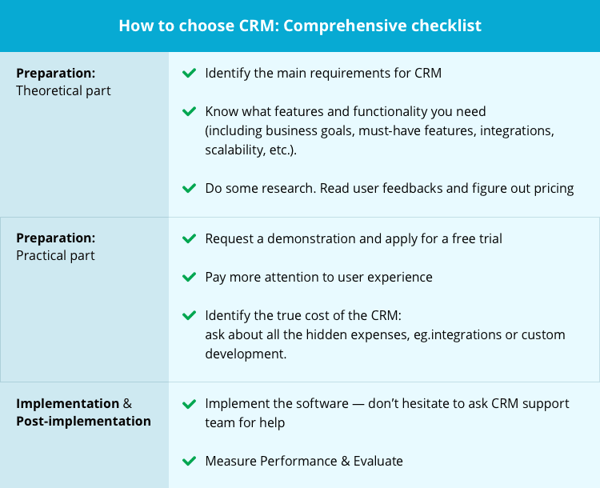
No two startups are the same, but there’s one thing they all have in common.
Many of them fail.
When it comes to startups, a staggering amount of them fail right off the bat. In fact, seventy-five percent percent of them fail within a couple of years. Unsurprisingly, there are only a few reasons why they fail. Founders get into the same traps over and over, and if they could avoid the majority of mistakes, their startups would have better chances at becoming successful.
The follow mistakes entrepreneurs fall prey to are listed below. Do any of them look familiar?
Entering the market with a newborn startup is like being in a dark chamber alone; you know you’re there, but nobody else does. Some startups use so-called matches to shed some light of recognition on their way to better revenue. They do short term advertising activities and spend thousands of dollars on a fancy website, but matches burn fast.
Plan your marketing long before your startup hits the market. Do thorough competitor research and see which advertising activities are a must and which aren’t necessary at the start. Well-aligned offline, online, and social media marketing strategies result in higher efficiency and fewer surprises along your startup journey. Plus, utilizing the right social media marketing software can help alleviate pain points during the process.
Any good idea should be tested and tried out, and no marketing activities should be based on pure speculation. When it comes to long-term strategies, data is your best friend.
Consider these essential steps to develop your basic marketing strategy.
Group the existing customers by different demographic parameters: age, gender, pain points, and so on. Then do some research. Define your competitors and go through their messages. It will help you develop a tone of voice, see which marketing efforts drive the most engagement, and use it in your strategy.
Unique tone of voice helps your startup better resonate with your customers’ needs. Research your competitors and determine what customers lack. Read forums where your target audience can be, and put yourself in their shoes.
You can also interview your existing customers; they are the most valuable source of insights. What are their biggest challenges? How your startup solves them?
Very few new entrepreneurs have the budget for marketing. However, despite the lack of budget, you have to plan your marketing way before your startup hits the market.
Show the process of product creation in social media, start a series of short videos about your product, or pitch relevant media with your startup idea. It's free, but requires a sufficient amount of time and efforts. So, give yourself some time to think your marketing strategy over.
The "expectation vs. reality" situation appears when there are no clearly defined KPIs, but the startup owner silently expects amazing results from every team member. Your strategy must align with sales goals and challenges and be flexible enough to survive changes and iterations.
Clear KPIs help minimize frustration while outsourcing advertising agencies or freelancers. Instead of fully relying on their expertise, invest some time to clarify your goals and ensure you're on the same page.
A large target audience means your startup is probably serving many customers poorly, rather than focusing on the most relevant ones.
You need to define who your perfect customer is and their true needs and concerns. When your startup is too scared to commit to a smaller target audience and tries to serve everyone instead, bad service occurs.
There will always be people who will stay indifferent or aggressive to your startup, and that’s perfectly fine. Product-market fit comes from a deep analysis of competitors and the focus on your ideal customer.
There are customer groups that promise new revenue opportunities, but don't be distracted by these shiny new opportunities. When you start developing custom features for every prospective client, you’ll eventually lose your paying customer base. Serve the customers who already see the value in your product well. As your customer base evolves, you can put more efforts in developing new features for them based on customer surveys, feedback, and requests.
The clearer you define your target audience, the better you can understand how and where to reach your best prospects. You can start with broad categories like gamers or millennials, but you need to specify it to get the best possible conversion rate and develop relevant messages.
Start with interviews with existing customers and ask the audience in specific Facebook or LinkedIn communities to participate in your research for a small discount. You can even use survey software to develop questions that your customers can answer anonymously.
For example, if you've developed a hotel booking app, go to relevant communities in Facebook, eg "World traveler Community" where your target audience is and ask for help. A hundred replies are better than a thousand guesses.
When you’re finding out buyer persona, there are two don't you should always remember:
Both of the aforementioned steps will result in a weak customer base with zero-to-minimum customer loyalty.

Every Thursday, we spill hot takes, insider knowledge, and news recaps straight to your inbox. Subscribe here
Regaining lost opportunities is hard. However, it’s about five times cheaper to retain existing clients than to attract completely new ones. Startup owners usually neglect about 20 percent of their customers.
This happens because they put every new customer record in spreadsheets or the sales rep can’t physically handle all the leads. In a startup, the one that has more knowledge rules the process.
With dozens of interactions with prospects going on every day, a startup must have constant records of every step of customer progress. For new staff, it will be easier to catch up on the process. For the startup owner, it will be easier to see sales progress and the percentage of bounced customers. If your startup has a growing user base, and you want to keep all customer interactions in order, congrats, you need a CRM.
CRM (Customer Relationship Management) tools help manage all stages of interactions with customers and leads to improve customer loyalty and to streamline the processes.
Finding a CRM for a startup that fits your goals, objectives, and business type is crucial for stable success. Recent stats revealed that nearly 15 percent of startups go bankrupt because of a poor customer relation process.
Need help finding the right CRM software for your company? See our real user reviews to find out what people are saying about CRM solutions!
At the start, choosing a CRM is a challenging task. With a clear vision of what your startup needs in a CRM and what it doesn’t, you’ll save a lot of time and money on popular, but pricey CRM solutions.
Here's a small cheat sheet on how to choose a CRM:

In a startup, working with the wrong people can manifest itself in executing slowly against company goals. A poorly motivated team can grind the startup to a halt.
As a startup owner, you have to clearly define your startup mission, values, and strategic plans, and speak them out loud with your team.
The solution to miscommunication could be ongoing, assertive, and honest dialogue with startup employees about the needs of the startup, and making sure these needs are relevant to them.
Sometimes startup owners hire employees with less experience to save on their salary. However, less experience results in lower results and lower revenue. Make sure your employees are able to do the job well or hire someone with more experience to manage them.
It’s a common case to hire friends or relatives in a startup, but you're not doing them any favors giving them in a job they aren’t able to do. Close friends and relatives won’t be able to distinguish the business from personal attitude. They may also feel privileged to other employees, which results in lower motivation.
To help create a better organized and motivated team, you can create a space for individuality to encourage autonomy, hold regular meetings to ensure transparency, and give more responsibility to improve growth.
Developing great workplace culture works wonders for motivation, especially for startups. Make clear to your team that all their efforts help your company change the world, but only if that is really so.
Staying on the same page is crucial to startup success. When you're not sure you're on the same page, communication suffers. You don't need meetings on every occasion, but if you announce the topic and define the main meeting focus, meetings can become extremely useful.
If you run a startup, you have been doing pretty much everything until you hired your first employees. It's extremely hard to give up control, but it's a necessary step in developing maturity. The startup where the owner sinks in operational tasks will never grow.
Increasing team productivity can help you a lot in achieving better results without burnout.
A startup is usually small and extremely flexible: a small team of like-minded professionals, spirit of freedom, and special ambition to change the world. Sounds familiar, right?
Have you imagined your startup growing to 200 employees and turning into a serious player in the market? How will you scale up your product/service? Is it scalable at all?
Pivots, revenue prediction models, and KPIs may seem boring, but you have to deal with them on a regular basis and find a good analyst who can give a 360-degree view on what’s happening within the startup. Words are good, but data is more convincing. Align analytics reports with your expansion plans and calculate possible pitfalls and outcomes.
In order to create a growth model that will accurately help your startup expand, you must ensure that you have a constant revenue stream, take care of your employees, and stick to your pace.
There's only one question that startups ask before entering new markets, improving the products, and growing their businesses: do I have enough money to handle all this? Many young entrepreneurs fully rely on loans and future profits. Don't step on that side without precise calculations and well-informed decisions.
Two thirds of full-time employees experience burnout at their jobs caused by unmanageable workloads and unreasonable time pressure. Interview your team leads to identify their workload capacity and encourage them with bonuses for successful performance.
Faster, stronger, better! It's the mantra of every second growing startup, but don't follow the crowd. Develop sustainable practices across your startup to keep your growth under control and secure its healthy growth. Don't enter new markets if your product is not ready for it.
To help manage day-to-day tasks at your startup, discover project management software to help organize and meet short- and long-term goals.
Lina Lugova is a Digital Marketing Expert at Epom White label DSP. Lina has created, developed and managed growth strategies for some of the top brands and solution providers. She is passionate about what she does and leverages data, innovation, and creativity to drive results.
You can’t run a successful startup on gut instinct alone.
 by Dave Nevogt
by Dave Nevogt
More than 25% of total revenue and profits across industries are generated by the launch of...
 by Emily Smith
by Emily Smith
When running a small to midsize company, there are times when you’re caught in the crossfire...
 by Lina Lugova
by Lina Lugova
You can’t run a successful startup on gut instinct alone.
 by Dave Nevogt
by Dave Nevogt
More than 25% of total revenue and profits across industries are generated by the launch of...
 by Emily Smith
by Emily Smith


